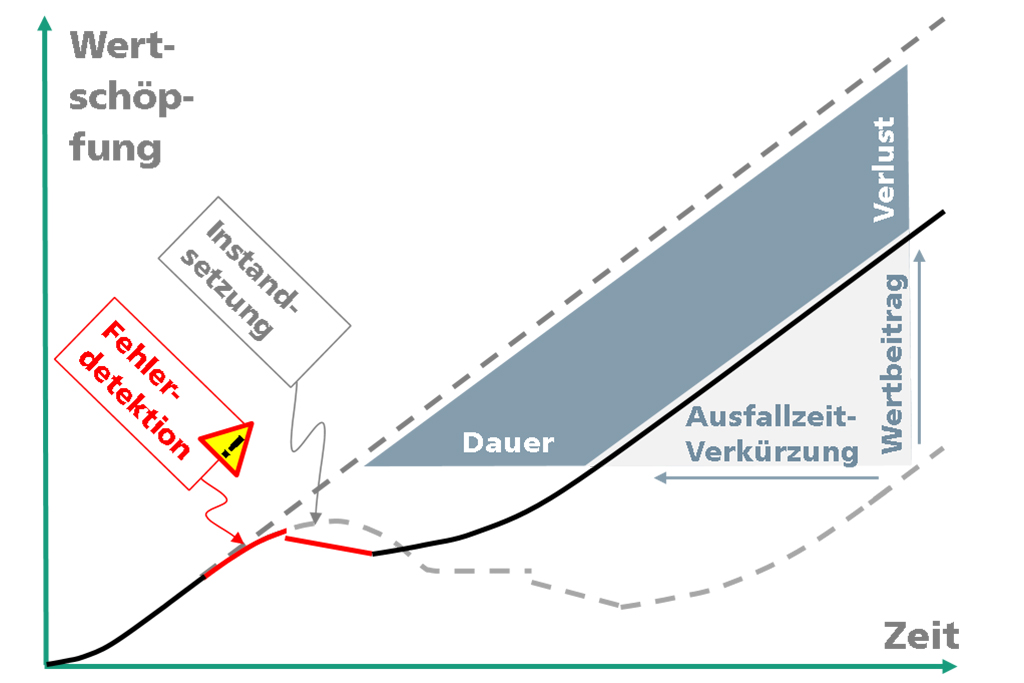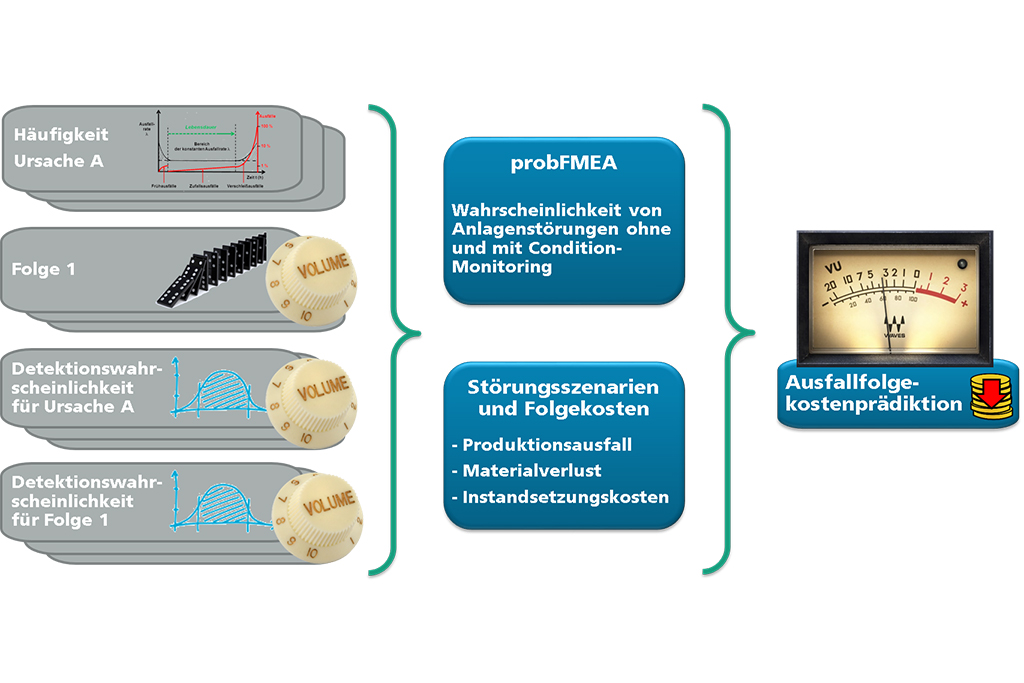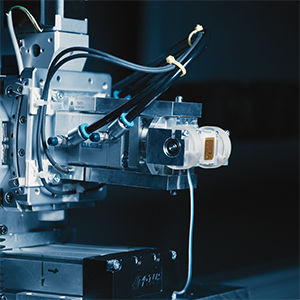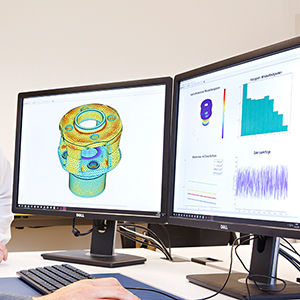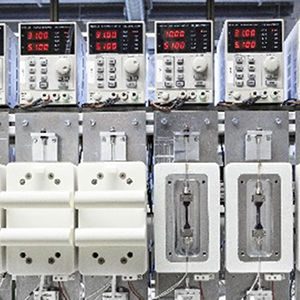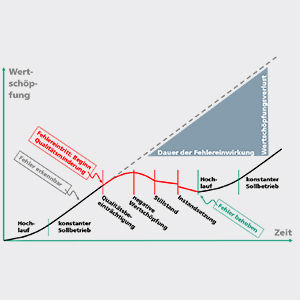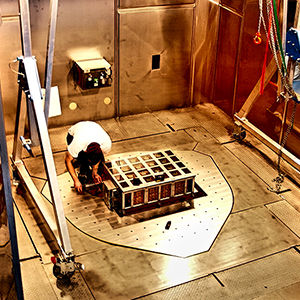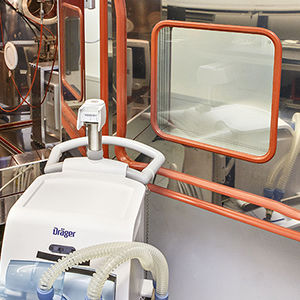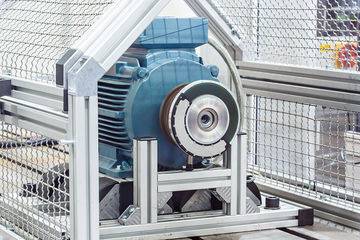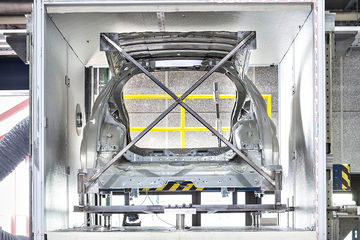Cost Optimization through Failure Detection in Digitized and Networked Production Processes.
CONDITION MONITORING, AUTOMATION
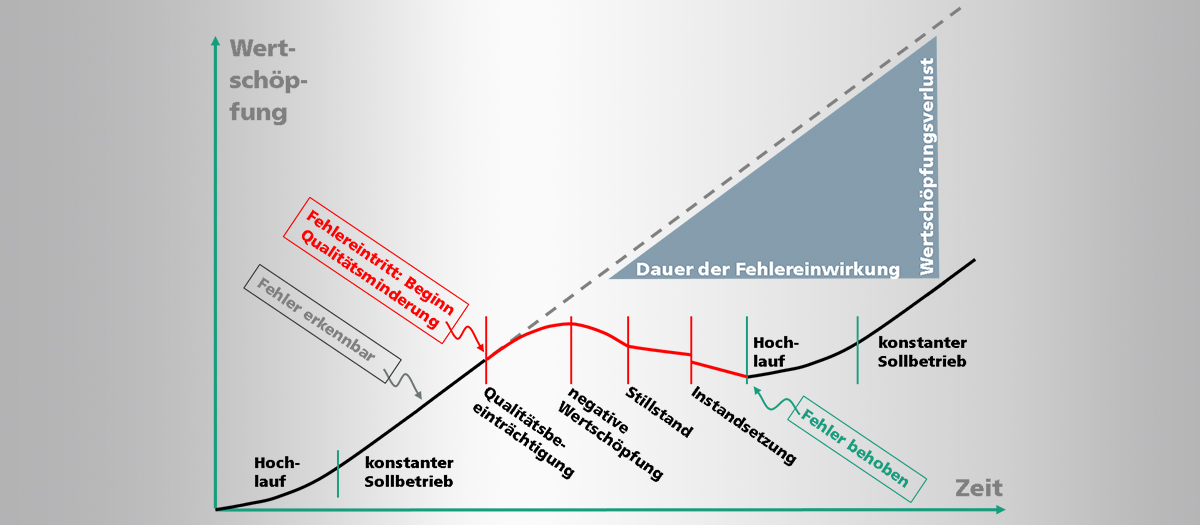
Automation has always formed the basis of industrial production processes. Current trends towards digitization and data networking are helping to open up new dimensions in this regard. Going beyond the bounds of manufacturing halls and plants, the vision aims to establish automated, integrated production and logistics chains which can, if necessary, be digitally controlled from remote locations or are even self-organizing. Despite or perhaps because of this, system breakdowns would lead to significant repair costs and productivity losses as well as other consequences. Therefore, the vision outlined also requires digitized failure detection, which was handled by machine operators in the past. In order to effectively avoid failure costs, preventive failure detection is required, so that repairs are carried out on the system before capital damages and massive process disruptions occur.
A new approach by Fraunhofer LBF enables the detection of defects that would have serious and expensive consequences. Using failure analysis combined with Bayesian networks, the effectiveness of failure detection and condition monitoring systems can be taken into account and the cost saving that can be achieved as a result estimated.
For increasingly automated and functionally networked production systems, by definition, fewer individuals with regular tasks are working at the machine. Even in the current daily production routine, this has a series of consequences for maintenance and repair: Nowadays, there is no such thing as the traditional “machine worker” who knows “his machine” and notices signs of a defect and stops it before the workpiece or the machine sustain serious damage, or knows whether and how it can ideally be kept in working order until the current job is completed, for example. With advancing automation and networking and the associated lack of personnel who are familiar with the machine, the danger of massive disruptions to the entire production line and other networked processes increases.
The approach developed by scientists at Fraunhofer LBF aims to tackle exactly the points of automated failure detection or a risk-based maintenance strategy where particularly serious process disruptions could occur and costs associated with breakdowns be incurred. With this in mind, the experience-based knowledge of the on-site maintenance and production teams was gathered and used as input for the unique probabilistic Failure Mode and Effects Analysis (probFMEA) developed at Fraunhofer LBF. On the basis of this, the likelihood or expected frequency of component failures can be linked to possible breakdown scenarios of the system based on probability assessments (Bayesian networks) so a quantitative (monetary) evaluation of the failure costs can be carried out. This provides a concrete image of the costs incurred due to individual failures, which enables the most expensive causes of disruption to be identified.
Superordinate diagnosis strategy cuts costs
This allows for the assessment of specific areas of potential savings through the use of targeted error detection as well as, where effective, failure prognosis based on condition monitoring systems. This approach becomes especially efficient through the comprehensive observation of the possible failure of critical system parts involving the definition of a superordinate diagnosis strategy which detects the same types of symptom based on various causes. Using measurement variables observed individually in a targeted manner, a range of critical failure options can be monitored and differentiated for failure diagnosis on a case-by-case basis. This in turn can also be used as the basis and point of origin for the establishment of self-learning diagnosis systems and for breakdown prognosis.
The approach was successfully tested last year at Fraunhofer LBF in research and customer projects and is being developed on a continuous basis. At the moment, researchers are primarily working step-by-step on establishing a software tool which is optimally adapted for this. Companies can already benefit from support through an analysis of breakdown cost prediction and cost reduction through the condition monitoring of production systems.
Contact
- Matthias Rauschenbach
- Phone: +49 6151 705-8334
- matthias.rauschenbach@lbf.fraunhofer.de
- Andreas Friedmann
- Phone: +49 6151 705-493
- andreas.friedmann@lbf.fraunhofer.de
